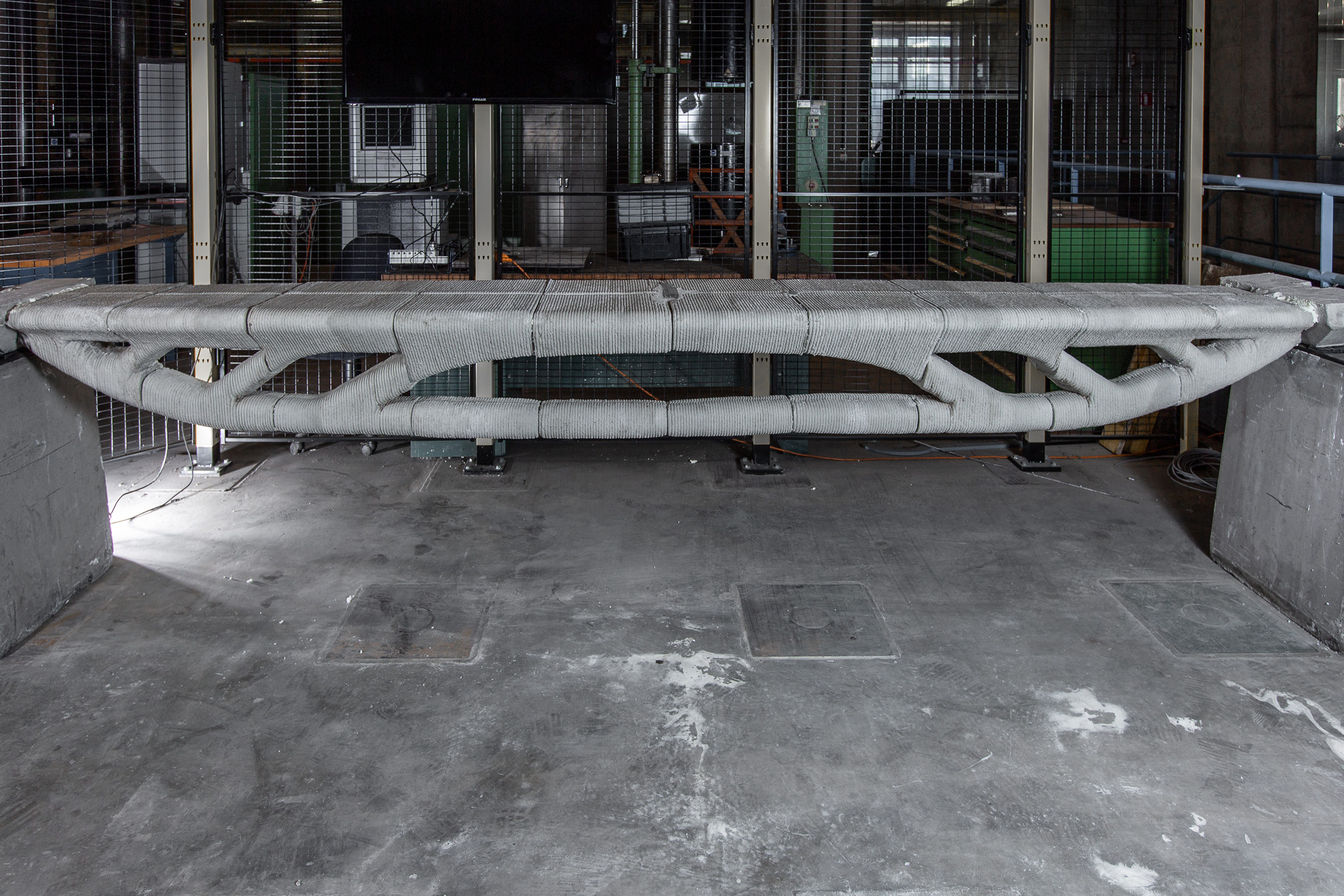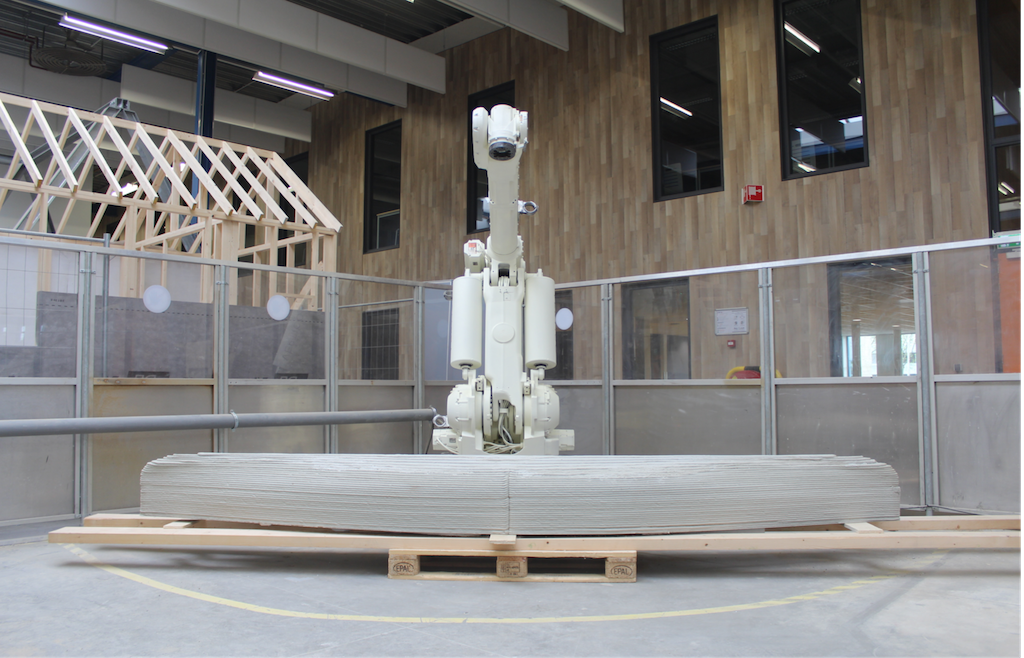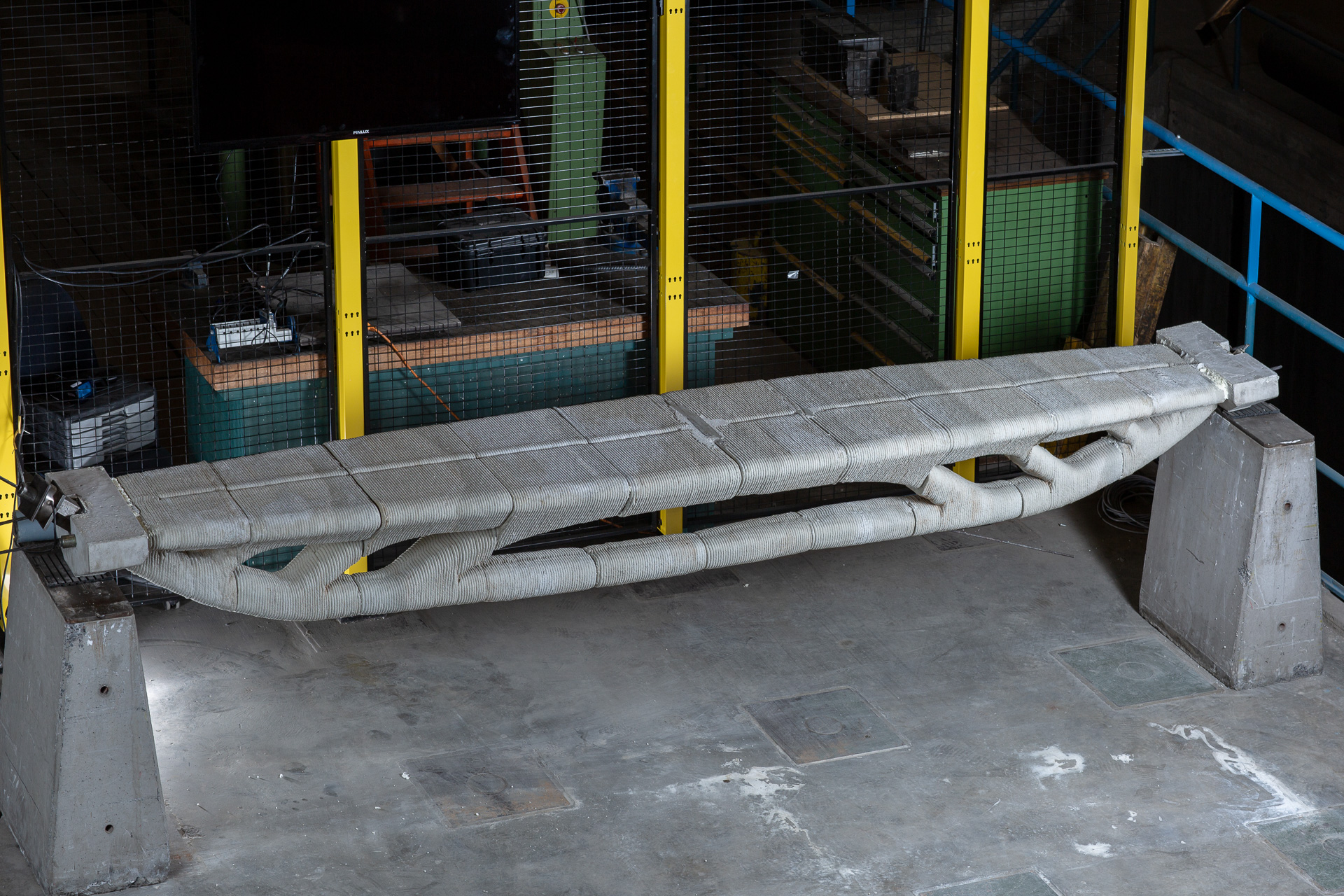Vertico, a Netherlands-based 3D concrete printing specialist, has collaborated with the University of Ghent to 3D print an optimized and material efficient footbridge. The firm minimized the materials used in the construction of the bridge by 60 percent through its concrete 3D printing process.
Despite using less material, 3D printing helped to create optimized structures still able to withstand the same stresses as a traditionally manufactured bridge. By constructing the bridge, Vertico aims to highlight the advantages 3D concrete printing has to offer for the building industry.
“This bridge showcases the range of possibilities that 3D concrete printing offers,” explained Volker Ruitinga, founder of Vertico.
“At Vertico, we believe that this technology is the key to unlocking material optimisation in structures, reducing CO2 emissions whilst simultaneously increasing productivity in the construction industry”

3D printing and the construction industry
Located in Utrecht, Vertico aims to promote and utilize 3D printing for the production of parametrically & topologically optimized structures.
The company offers various services towards this end, including live 3D concrete printing for events and conferences using its mobile demonstration 3D printer, the EVA M-1 compact. Vertico has also developed its own integrated robotic 3D printer and specially designed concrete mixture layer, which is available to customers for large and small-scale projects.
Furthermore, the company is a reseller of 3D gantry concrete printers from robotic and handling system manufacturer Rohaco. As well as the two concrete 3D printers, Vertico also offers a full-service range including 3D design, construction calculations, programming, realisation and transport for customers’ projects.

Vertico believes that 3D concrete printing can provide the construction industry with much needed automation and innovation, in order to combat its poor productivity and high CO2 emissions. With the 3D printed footbridge, it hopes to demonstrate the possibilities of the technology on a relevant and significant scale
Structurally optimized objects reduce material use, and therefore CO2, however they require complex, organic shapes that are costly to build using traditional construction techniques. These shapes can only be realised cost-effectively using 3D printing, according to Vertico, which is able to deposit concrete mixture layer-by-layer with form freedom and without the need for moulds.

Building bridges using 3D printing
As Vertico points out, the advantages of 3D concrete printing for building and infrastructure projects are being increasingly recognized. Although it aims to highlight these advantages with its project, the company is by no means the first to utilize 3D printing to construct a bridge.
Amsterdam-based Robotic Additive Manufacturing (RAM) technology developer MX3D has been engaged in an ongoing project over the last four years to construct a 3D printed stainless steel bridge. The bridge is planned for installation across the Oudezijds Achterburgwal canal in the center of Amsterdam, and will be integrated with smart technology using a sensor network and digital twin to monitor the bridge’s health in real-time.
Recently, Royal HaskoningDHV, a Netherlands-headquartered engineering consultancy firm, partnered with global science-based company and material producer DSM, and large-scale 3D printer supplier CEAD to help build a 3D printed bridge. The fiber-reinforced polymer (FRP) pedestrian bridge similarly has sensors included in its design to help predict and optimize its maintenance.
Subscribe to the 3D Printing Industry newsletter for the latest news in additive manufacturing. You can also stay connected by following us on Twitter and liking us on Facebook.
Looking for a career in additive manufacturing? Visit 3D Printing Jobs for a selection of roles in the industry.
Featured image shows people standing on Vertico’s 3D printed footbridge. Photo via Vertico.


